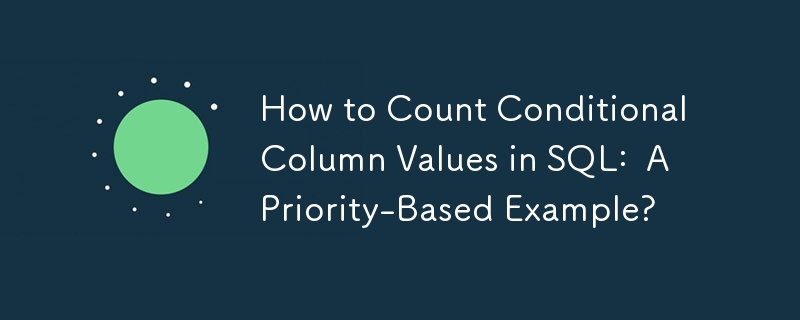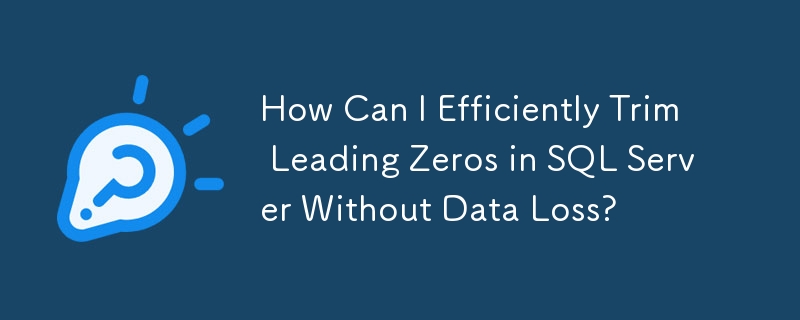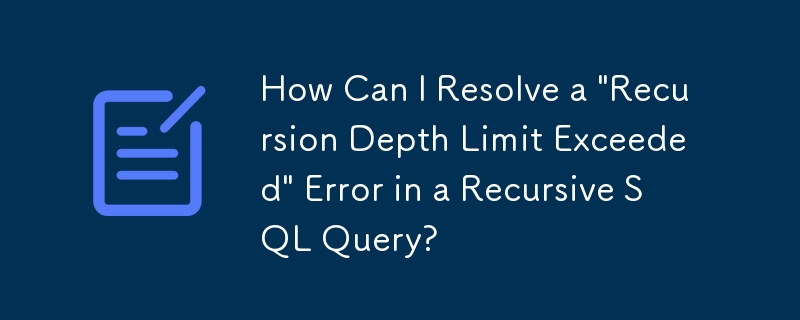Found a total of 10000 related content

How to implement data grouping in PHP?
Article Introduction:Implementing data packets in PHP can be implemented through array operations and loops. 1) Use loops and array operations to group student data by class; 2) Statistical analysis can be performed when grouping, such as calculating the number of students in each class; 3) Multi-level grouping can be implemented, such as grouping by class and gender, but attention should be paid to performance and memory usage.
2025-05-23
comment 0
444
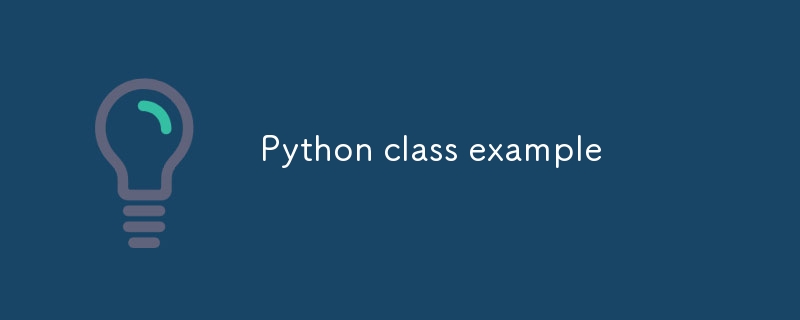
Python class example
Article Introduction:Python's class is a template for creating objects that encapsulate data and operations together. For example, defining a Person class can contain attributes such as name and age, and methods such as say_hello, which can be implemented by classPerson:def__init__(self,name,age):self.name=name;self.age=age;defsay_hello(self):print(f"Hello, I am {self.name}, this year {self.age} years old."). Using class organization code can make the program clearer through encapsulation, such as Student
2025-07-11
comment 0
718
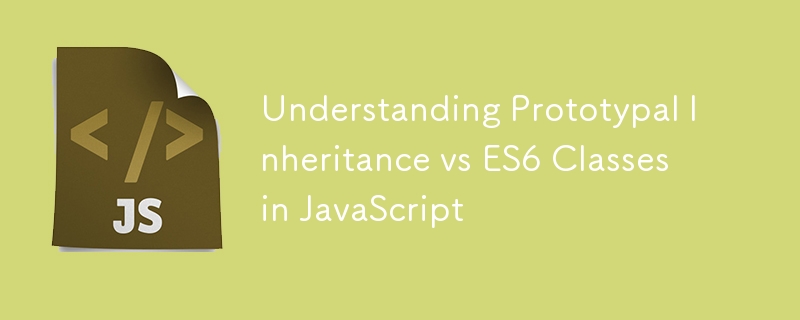
Understanding Prototypal Inheritance vs ES6 Classes in JavaScript
Article Introduction:JavaScript's object model is based on prototypes rather than classes, and ES6's class is syntactic sugar. 1. Each object has the [[Prototype]] attribute pointing to its prototype, and the properties and methods are accessed through the prototype chain; 2. The function has the prototype attribute by default, and the object's \_\_proto\_\_ points to the prototype of the constructor; 3. class is an encapsulation of prototype inheritance, providing clearer syntax, but the underlying layer is still the prototype mechanism; 4. Class declarations cannot be improved, methods cannot be enumerated and automatically set to be enumerable; 5. Inheritance is implemented in the prototype by combining constructors and prototype chains, and class uses extends and super to simplify logic; 6. It is recommended to choose according to the needs,
2025-07-14
comment 0
474

How to create custom elements
Article Introduction:Custom elements are part of WebComponents, allowing new HTML tags to be created and given behavior and styles. It is implemented by inheriting the HTMLElement class, registering the class as a custom tag and using three steps in HTML; it also supports life cycle callback functions such as connectedCallback, disconnectedCallback, attributeChangedCallback, etc.; when defining, it is necessary to note that the tag name must contain hyphens, it is recommended to use ShadowDOM encapsulation style, you can define complex structures, and keep the component logic modular to improve reusability.
2025-07-03
comment 0
440

How to use collections in Laravel?
Article Introduction:Laravel collection is an advanced encapsulation of PHP arrays, providing chained calling methods to process data. It is implemented through the Illuminate\Support\Collection class, simplifying filtering, mapping, sorting and other operations. For example, filtering users older than 25 and sorting by name requires only one line of code. Common uses include: 1. Create a collection through collect() function or model query; 2. Use map(), filter(), pluck() and other methods to process data; 3. Support chain calls to improve code readability; 4. Pay attention to collection immutability, return value type and how to use it in Blade templates. Mastering these techniques can significantly improve development efficiency.
2025-07-24
comment 0
733

php get tomorrow's date
Article Introduction:Getting tomorrow's date in PHP can be achieved through the strtotime() function or the DateTime class. 1. Use strtotime(): output tomorrow's date through echodate("Y-m-d", strtotime("tomorrow")), which is suitable for basic needs. 2. Use the DateTime class: Implemented by $date=newDateTime('tomorrow');echo$date->format('Y-m-d'), supporting object-oriented operations, time zone settings and chain calls, suitable for complex scenarios. Notes include setting the correct time zone and location
2025-07-16
comment 0
551

Example of using scoped CSS in a Vue component
Article Introduction:scopedCSS is a mechanism used in Vue single file components to isolate component styles and prevent global pollution. It is implemented by adding unique attributes to component elements and rewriting the CSS selector; 1. scoped style will not affect subcomponents, but can be penetrated through ::v-deep or :deep(); 2. scoped and module cannot be shared, and module improves encapsulation and maintainability through class name mapping variables; 3. scoped does not affect the introduction of preprocessor and external CSS files, and controls the slot content styles for limited control, and needs to be processed in combination with global styles or penetration methods.
2025-07-22
comment 0
657
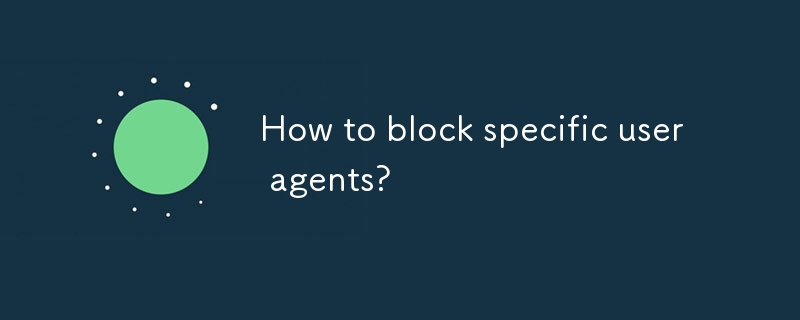
How to block specific user agents?
Article Introduction:To block a specific User-Agent, it can be implemented in Nginx, Apache, or code (such as PHP, Python). 1. In Nginx, judge $http_user_agent by if and return 403; 2. In Apache, use SetEnvIfNoCase and Deny to deny access; 3. judge User-Agent in the program and intercept the request. Common UAs that need to be blocked include python-requests, curl, empty UA, etc. Choosing the appropriate method can effectively reduce garbage traffic and security risks.
2025-07-26
comment 0
569

How to implement hook function in PHP?
Article Introduction:Implementing hook functions in PHP can be implemented through observer mode or event-driven programming. The specific steps are as follows: 1. Create a HookManager class to register and trigger hooks. 2. Use the registerHook method to register the hook and trigger the hook by the triggerHook method when needed. Hook functions can improve the scalability and flexibility of the code, but pay attention to performance overhead and debugging complexity.
2025-05-15
comment 0
315
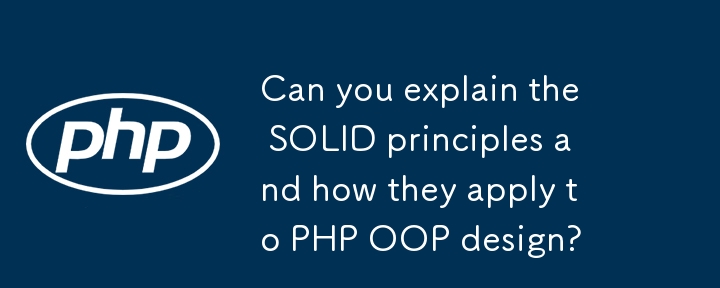
Can you explain the SOLID principles and how they apply to PHP OOP design?
Article Introduction:SOLID principle improves code maintainability and scalability through five core principles in PHP object-oriented design. 1. The single responsibility principle (SRP) requires that each class has only one responsibility, and the separation of concerns is achieved through splitting functions; 2. The opening and closing principle (OCP) advocates extending behavior through interfaces or combinations rather than modifying the original code; 3. The Richter replacement principle (LSP) ensures that subclasses can replace the parent class without destroying logic and avoid behavior inconsistencies; 4. The interface isolation principle (ISP) recommends defining fine-grained interfaces to avoid redundant dependencies; 5. The dependency inversion principle (DIP) decoupling high-level and underlying modules by relying on abstract types (such as interfaces) rather than concrete implementation, and is commonly implemented by dependency injection.
2025-06-19
comment 0
647
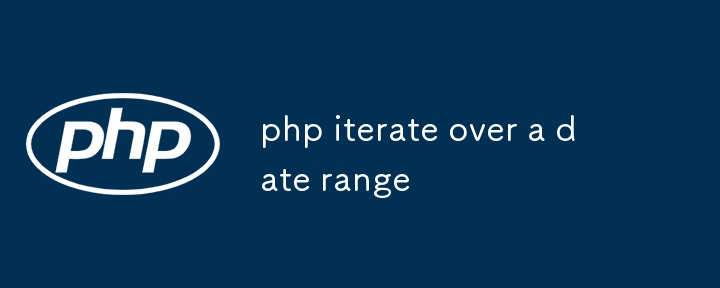
php iterate over a date range
Article Introduction:It is recommended to use the DatePeriod class to traverse date ranges in PHP. 1. The DatePeriod class was introduced from PHP5.3, and date traversal is implemented by setting the start date, end date and interval. For example, generate a date list from 2024-01-01 to 2024-01-05, which does not include the end date by default; 2. If you need to include the end date, you can adjust the end date or set the INCLUDE_END_DATE parameter; 3. The manual loop method can also complete the traversal using the DateTime object and the modify() method, which is suitable for scenarios where step size needs to be flexibly controlled; 4. Pay attention to the time zone problem that should be explicitly set to avoid the system's default time zone affecting the result; 5. PHP automatically handles leap years
2025-07-14
comment 0
166
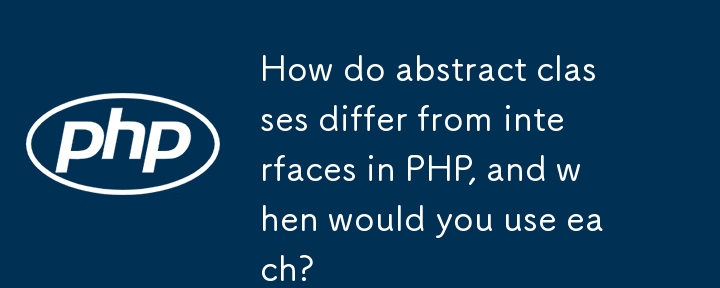
How do abstract classes differ from interfaces in PHP, and when would you use each?
Article Introduction:Abstract classes and interfaces have their own uses in PHP. 1. Abstract classes are used to share code, support constructors and control access, and include abstract methods and concrete methods. 2. The interface is used to define behavior contracts. All methods must be implemented and are public by default, and support multiple inheritance. 3. Since PHP8, the interface can contain default methods to implement, but there is still no constructor or state. 4. When using abstract classes, you need to encapsulate implementation details; when using interfaces, you need to define cross-class behavior or build plug-in systems. 5. Can be used in combination: abstract classes implement interfaces or combine multiple interfaces into one abstract class. Select whether the structure plus sharing behavior (abstract class) or only the structure (interface).
2025-06-04
comment 0
1122

What are Weak Maps in PHP?
Article Introduction:PHP does not have a built-in WeakMap type, but similar functions can be implemented through the WeakMap class provided by the WeakrefPECL extension. The key feature of WeakMap is that its keys are stored in a weak reference manner, avoiding preventing garbage collection and thus preventing memory leaks. When using it, you must first install and enable the Weakref extension. After creating a WeakMap instance, the object is stored as a key, and it will be automatically cleaned when there are no other references to the object. Applicable scenarios include: 1. Cache object-related data; 2. Add metadata to the object; 3. Avoid memory leaks in the event system. Notes include: 1. WeakMap is not a PHP core function; 2. The key must be an object; 3. The entry clearing time is uncontrollable. If the deployment environment allows,
2025-06-27
comment 0
366
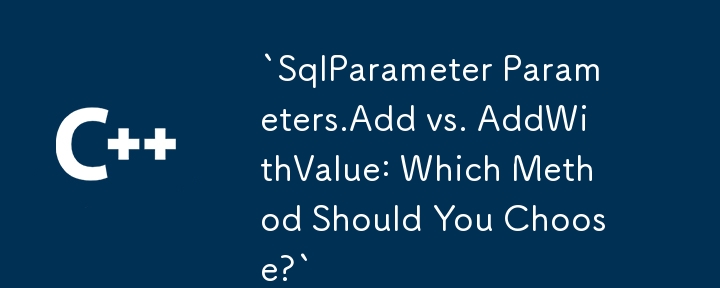
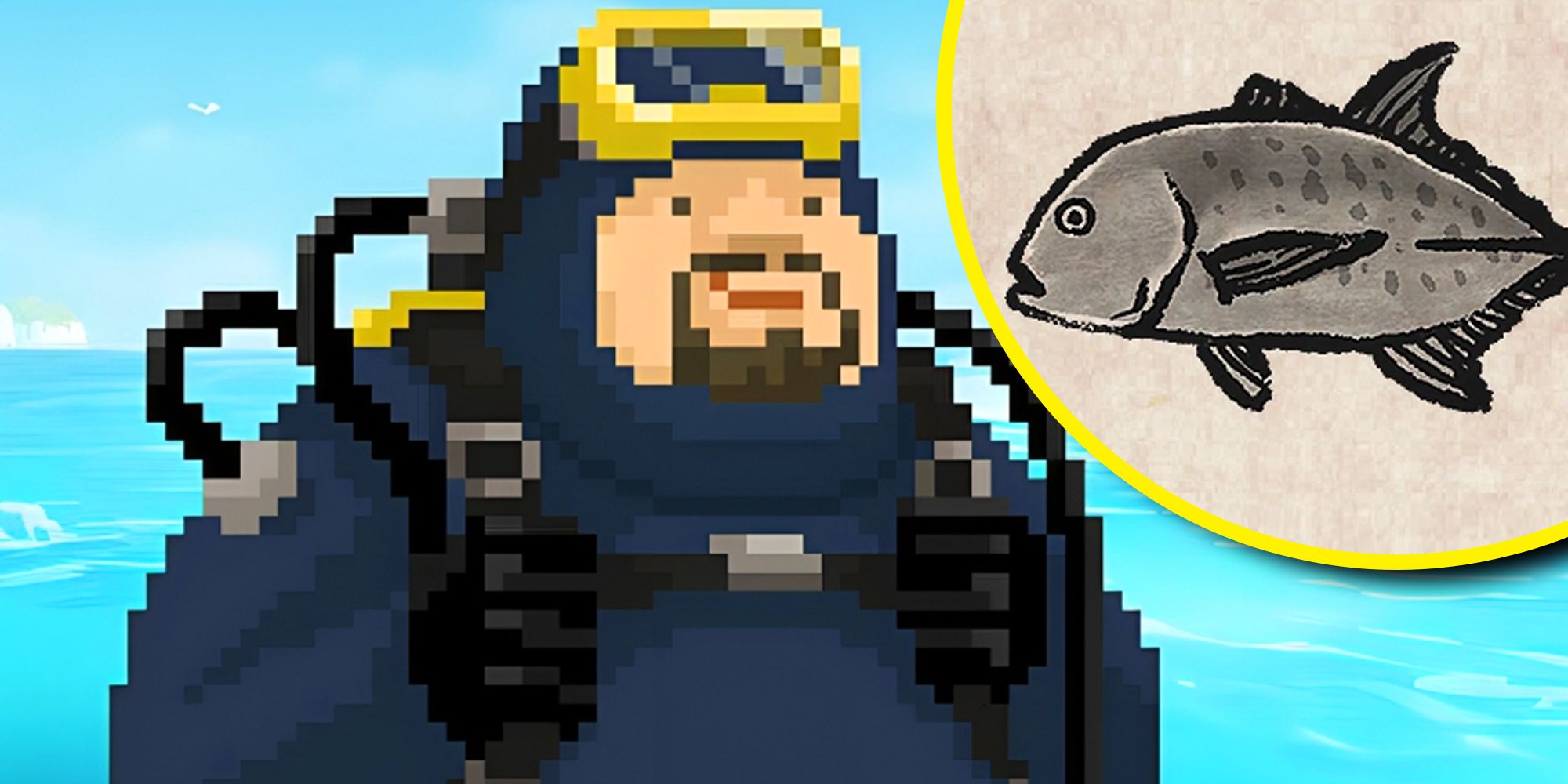
Dave The Diver: How To Catch Spider Crabs
Article Introduction:In Dave The Diver, there are some creatures that are not easy to catch. Or, catch alive that is. The spider crab is one of those very species, making it seem like the only way to bring these crustaceans back up to land is to viciously crack them up w
2025-01-10
comment 0
861

Prepare for Interview Like a Pro with Interview Questions CLI
Article Introduction:Prepare for Interview Like a Pro with Interview Questions CLI
What is the Interview Questions CLI?
The Interview Questions CLI is a command-line tool designed for JavaScript learners and developers who want to enhance their interview
2025-01-10
comment 0
1489















